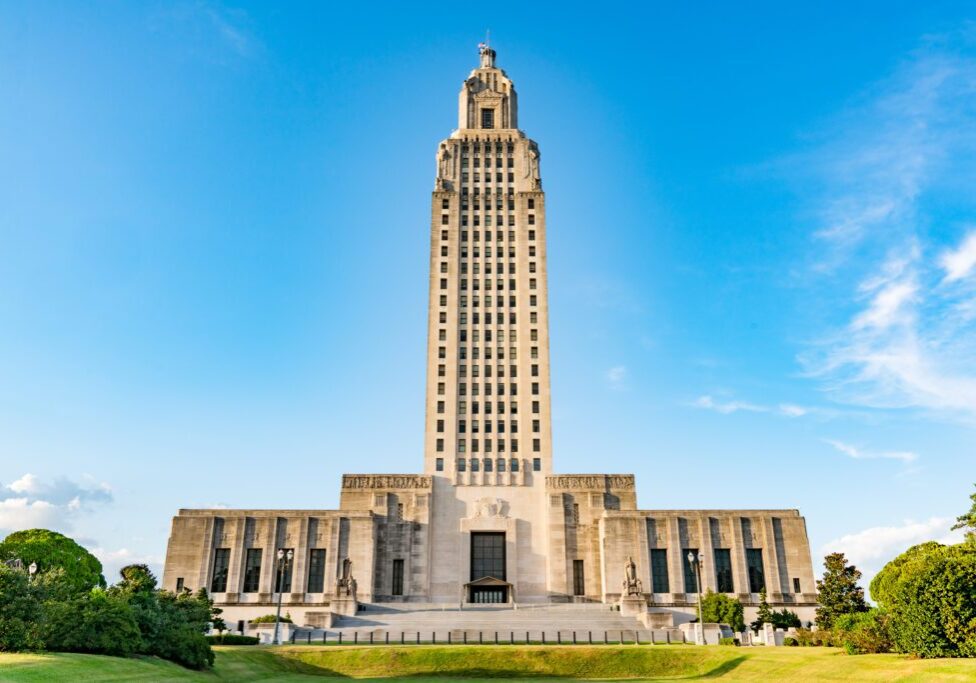Louisiana’s 2024 fiscal year starts tomorrow, and as expected Gov. John Bel Edwards used his line-item veto to restore a $100 million health care funding cut made by the Legislature in the frantic finale to the session. The governor also added back $7.5 million for early childhood education programs that allow working parents with low incomes to have affordable, high-quality care for their infants and toddlers. To make room for the spending, Edwards vetoed $125 million allocated for pre-paying debt in the state pension system. The Advocate’s James Finn reports on the budget bill that has now become law:
In an emergency hearing of the Senate Health and Welfare Committee earlier this month, LDH Secretary Stephen Russo named behavioral health and elderly care programs as areas that could have suffered if the reduction became law. By adding back the $7.5 million for early childhood education seats, Edwards brought total funding for those seats to about $51.5 million. He had sought $52 million for that purpose before the session, a figure that was whittled down and then partially restored through negotiations.
LBP’s Jan Moller spoke with David Jones of WVUE-TV in New Orleans about the line-item vetoes. The governor still has several bills on his desk awaiting action, including measures that outlaw gender-affirming care for LGBTQ+ youth and restricting classroom discussions of sex and gender.
Affirmative action struck down
The U.S. Supreme Court on Thursday struck down the use of race-conscious policies in college admissions, marking the latest move by the high court to move America to the right on a high-profile social issue. The decision means colleges can still tilt the scales for children from wealthy families or with family legacies, but cannot do the same for people who’ve been historically excluded and disadvantaged. The Advocate’s Mark Ballard reports that the decision is unlikely to mean as much in Louisiana as in other states with more selective schools:
“They may have 20,000 qualified applicants competing for, say, 3,000 or 4,000 or 5,000 slots as a freshman,” (University of Louisiana System President Jim) Henderson said of Harvard University and the University of North Carolina Chapel Hill, the schools weighed in the court case. UL’s nine colleges enroll about 91,000 students. “So, they were weighing race as one of those factors in assigning those limited slots. That’s so foreign to anything we do in Louisiana.” … Louisiana’s public colleges had more than 209,000 students as of last year, 31% of whom identified as Black, according to the Board of Regents. Another 6% were Hispanic; 12% of students identified as another race.
Brookings’ Andre Perry, Hannah Stephens and Manann Donoghoe write that the ruling will likely decrease racial diversity on college campuses, but that Historically Black Colleges and Universities (HBCUs) are well-positioned to fill the gap:
Although HBCUs represent only 3% of all four-year institutions, they account for 10% of all matriculating Black students, and awarded 17% of all bachelor’s degrees and 24% of all STEM-related bachelor’s degrees to Black students in 2019. HBCUs also enroll more than twice as many Pell Grant-eligible students as non-HBCUs. And while HBCUs saw their enrollment numbers increase during the COVID-19 pandemic, this upsurge may prove challenging as Black institutions—like Black people—are under-resourced due to past and present discrimination.
Deterring child labor law violations
Democrats on the House Education Committee are pushing back against states that are rolling back child labor laws. Legislation introduced this week would stiffen penalties for companies that knowingly violate child labor laws and prevent states from easing federal standards. The Protecting Children Act comes after at least 10 states have tried to weaken protections against child labor, even as child labor law violations have spiked 37% over the past year. States Newsrooms’ Ariana Figueroa reports:
The bill aims to strengthen enforcement by increasing the maximum civil penalties, establishing new minimum penalties and doubling penalties for cases that involve the death of a child or repeat or willful child labor violations. For example, the current maximum penalty for violating federal child labor standards is $11,000, but under the new regulations would be a minimum of $1,500 and a maximum of $150,000. The bill also expands criminal penalties for willful child labor violations. Under current law, the penalty is a fine of no more than $10,000 and up to six months of imprisonment.
Preempting water breaks
Many states, like Louisiana, have laws that preempt local authorities from passing their own laws on minimum wage or worker rights. While most of the attention around these preemption laws have centered on labor, and more recently climate policies, a new law in Texas would preempt a broad swath of ordinances, including those for mandatory water and rest breaks for outside workers. The New York Times reports on how the state government’s attempt to exert control over cities could mean life or death for people caught in the middle.
“The bill undermines Austin and cities across Texas in their ability to do what is best to protect people,” said Kirk Watson, the mayor of Austin, adding that he hoped contractors would “continue to uphold Austin values and continue to protect workers, especially in times like we are seeing.” … The ordinance in Dallas passed after the death of a 25-year-old worker, Roendy Granillo, who was installing hardwood floors in a house without air conditioning when he began to feel sick and asked for a break. The request was denied. He kept working until he collapsed.
Editor’s note: The Daily Dime is taking its annual hiatus during July. We’ll be back in early August. If you appreciate this email in your inbox, please consider making a tax-deductible gift to LBP.
Number of the Day
6.2% – Growth in personal income in Louisiana in the first quarter of 2023,
compared to 5.1% for the nation. Louisiana’s gross domestic product grew
1.4% over the same period, which was below the 2% economic growth for the nation (Source: Bureau of Economic Analysis)
